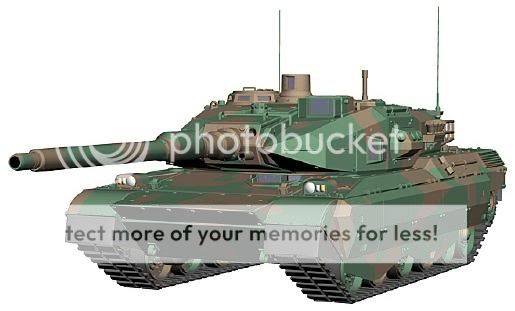124 more Arjuns, but indigenous tank has 58% foreign content
20 May 2010 : In March, Livefist had reported that "Army will not order more Arjuns" giving a MoD source and some reasons. So the latest order for another 124 Arjuns would have been a painful process for the Army, made possible due to the recent success of the Arjun vs the T-90 in field trials and the success of DRDO's pressurising tactics.
A sign that more Arjuns were about to be ordered were given when the Defence Minister Antony spoke about Arjun Mark II in last week's press releases about DRDO's re-structure. The latest order of 124 Arjun Main Battle Tanks (MBTs) over and above the existing order of 124 Arjun tanks, which the army had committed to Defence Research Development Organisation (DRDO) earlier. The development follows the success of the indigenous MBT Arjun in the recent gruelling desert trials.
The decision to order additional tanks has not surprised many as the indigenous battle tank had proved its worthiness in the desert trails conducted by the Indian Army and DRDO earlier this year. Financial Express reports that during the trials Arjun MBT was 30% more efficient than the Russian T-90s.
In fact, the DRDO had put down more than 100 parameters ahead of the trials in which the MBT performed well. Hindustan Times reports Defence Ministry spokesperson saying, "After many years of trials, it has now proved its worth by its superb performance under various circumstances such as driving cross-country over rugged sand dunes, detecting, observing and quickly engaging targets and accurately hitting stationary and moving targets."
The Times of India reports that in spite of additional orders and a stellar performance by the Arjuns during the comparative trials with the Russian T- 90s, the army maintains that T-90s will continue to be its front line tanks. Hence, the force's requirement for 1,781 MBTs to replace the older T-55 and T-72 tanks will primarily be met through the progressive induction of 1,657 T-90S tanks.
Even though Arjun is said to be indigenous, nearly 58% (by cost) is foreign equipment. With India's push for integration in to the global defence-manufacturing value chain, today, it is not viable/cost-effective and therefore not desirable for India to aim for 100% indigenisation (like the Saras civilian plane). But after 3 decades of development if you only have 42% indigenous content then it is misleading to call it an indigenous platform. Understandably, unless you have large orders foreign vendors will not be interested in transfer of technology and will sell systems at higher prices. While reverse engineering is difficult, the percentage of indigenous content will go up over time and hopefully the public and private sector companies will have a larger participation in the program.
As per the Indian army's plan, 657 T-90s would be imported from Russia at a cost of Rs 8,525 crores and another 1,000 T-90s would be manufactured under license by Avadi Heavy Vehicles Factory. With the twin order, the total Arjuns to be inducted in the army would be 248, which is still half the 500 tanks that DRDO insists the Army should buy to bring cost rationalisation.
The project for the design and development of the MBT Arjun was approved by the Government in 1974 with an aim to give the required indigenous cutting edge to our Mechanised Forces. However, due to a series of problems the development of tank could not be completed on time, thereby delaying armoured modernization and forcing India to look for options abroad.
http://www.8ak.in/


